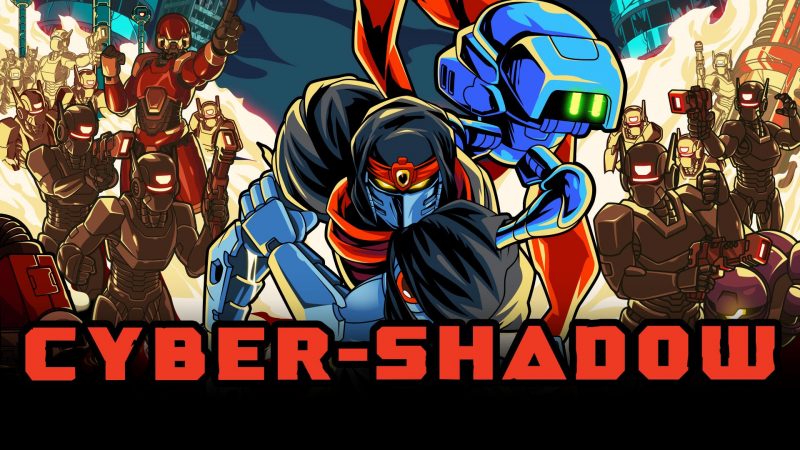
Indie throwbacks to the the NES generation of 2D action games will likely never die. Why would they? Their easy to pick up, but difficult to master gameplay is as timeless as can be. Surviving sneakily placed enemies while trying to scale a tower of platforms is something that is naturally appealing.
Overcoming improbable odds and learning patterns feels rewarding, because something that once felt impossible now feels easy. It looks cool to pull off these feats, and looking cool is inspiring. These kinds of 2D action games will always have a place, and now Cyber Shadow aims to hone some of the best qualities of the classics into one experience, with a couple of modern flourishes.
Challenging platformers are like an incredibly spicy curry. It tastes delicious, but to keep on eating it means to experience some intense sensations. Some people might bail out, but others keep on going and embrace the heat. The shocking flavor makes you feel alive, and a wave of relief washes over after the meal is done. Cyber Shadow is like this curry, but with robot ninjas and dragons.
Cyber Shadow
Developer: Mechanical Head Studios
Publisher: Yacht Club Games
Platforms: Windows PC, Nintendo Switch (reviewed), PlayStation 4, Xbox One
Release Date: January 26, 2021
Players: 1
Price: $19.99
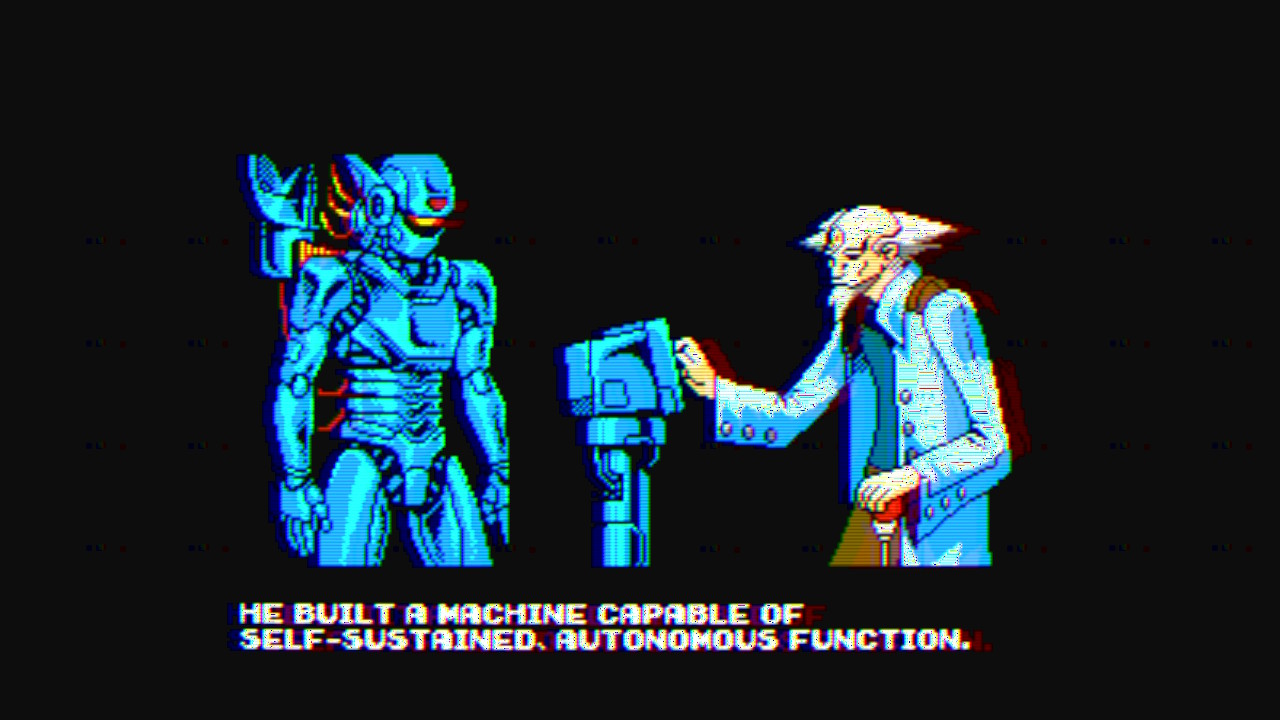
Like many indie NES era throw-backs, Cyber Shadow proudly proclaims its influences. Most people will automatically conjure up the Tecmo classic Ninja Gaiden, but those with a keen eye will spot cheeky nods to Shatterhand and Sunsoft’s Batman games too.
It is really shocking just how clever and subtle some of these homages are, and how they are used to make for a thrilling action game. Mega Man X‘s wall-slide is used to a great effect in the level design. Since Yacht Club is involved, the developers also found a way to include a downward strike that comes with a useful bounce, as seen in Shovel Knight and the original Ducktales.
Cyber Shadow is not without its own strokes of originality. There are some inventive mechanics that make it stand out from its influences and contemporaries like The Messenger. Cyber Shadow is able to do parries for more defensive play style, and is also able to dash-attack forward for connecting to targets and gaining more air.
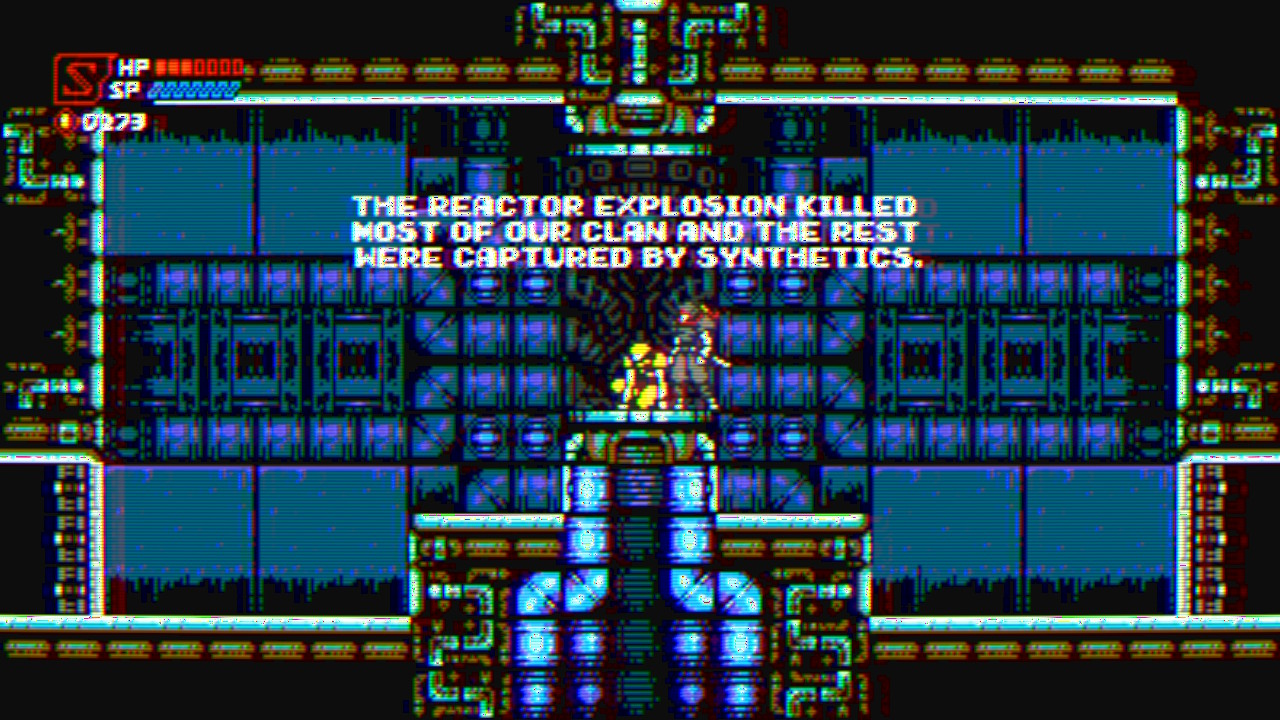
Cyber Shadow is the kind of action game where most of the thought and planning was focused on making it look stylish, and play better than the classics it was inspired by. The story is about what one would expect from a game where the player character is a robot ninja in a game inspired by 80s NES titles.
After an entire city is destroyed by an explosion, an obviously evil scientist takes command of the robots that operated its functions. With an immortal robot body and his mechanical army, the only thing that will stop Dr. Progen from further destroying the world is Cyber Shadow.
Before he was Cyber Shadow, this ninja was just another protector of the the city. He was one of many ninjas in a clan, and through out the adventure Cyber Shadow is able to read the spirits of those who passed. Surprisingly, Cyber Shadow has a lot of thought put into its themes of spiritualism and technology coexisting as one.
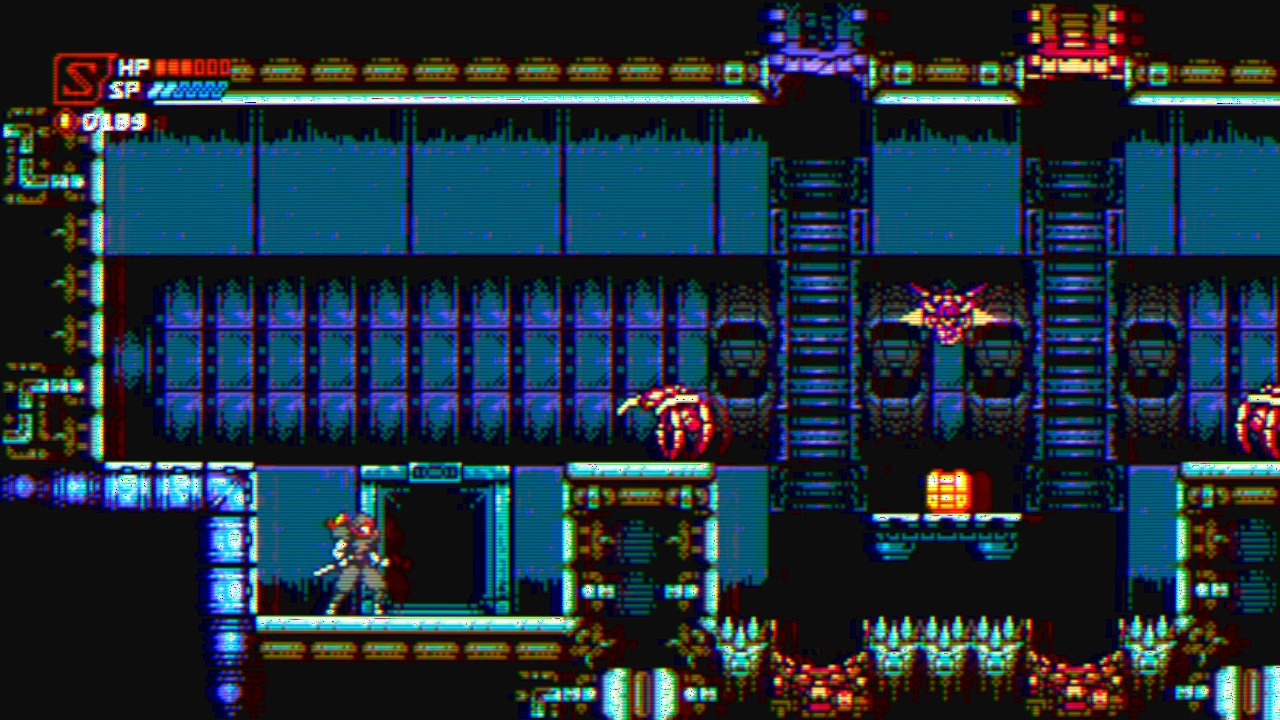
Aesthetically, Cyber Shadow is one cold looking game. The pixel art is masterfully designed and animated in game and in cutscenes. It definitely resembles the kind of games Sunsoft used to make, with the clever use of black to break up shapes to give the impression of depths and shadow.
The extensive use of cool hues and vast range of blue was something the NES was known for since it had more blue than any other of its 54 available colors. This is done to make certain other objects and threats stand out, which usually are emphasized with warm or hot colors.
The game even offers visual filters; both evoking the all too familiar CRT monitors many would have seen the classic games that inspired it. There’s even a “bad wiring” filter to resemble more haggard set, and both make the experience feel more genuine overall.
Just one look at any given screen and it is obvious where each obstacle is and what is of interest. It is going to be crucial to be able to quickly identify anything and everything, since Cyber Shadow does not play nice and is a very challenging experience.
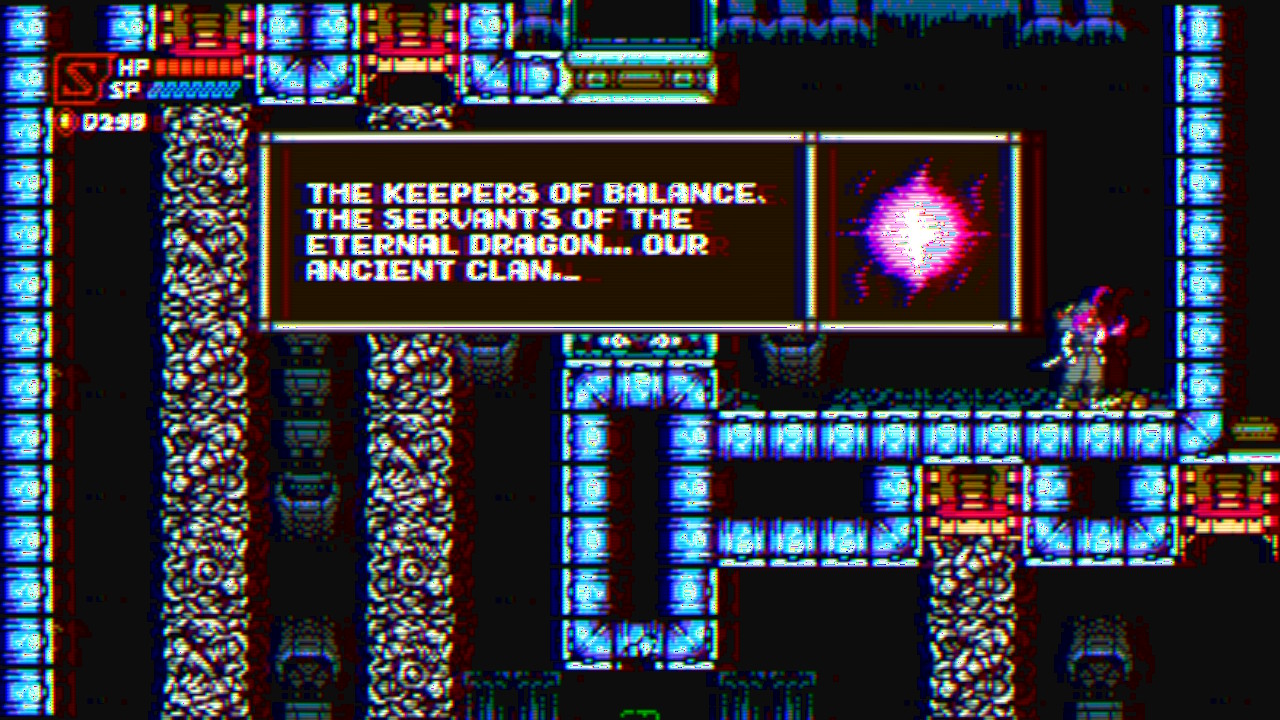
As a cyborg ninja, Cyber Shadow will primarily be cutting his way to the end of a stage. He will gain new abilities as he progresses deeper into the game, and will be able to return to prior stages at the map screen in order to acquire previously unobtainable items or upgrades.
The level design is varied; rife with large gaps that require the player to leap at the last pixel in order to clear the jump. Stage gimmicks that have moving or rising platforms will keep anyone on their toes, especially if there are suicide droids roaming around who can cause a Castlevania-like knock-back death into a bottomless pit.
There are level specific gimmicks like the drones that become platforms on water, or elevator sequences that were all the rage in the early 90s. Sometimes Cyber Shadow might have to pogo-hop on his blade across multiple consecutive enemies to reach safety. No matter what, the game never has a dull moment and constantly throws curveballs.
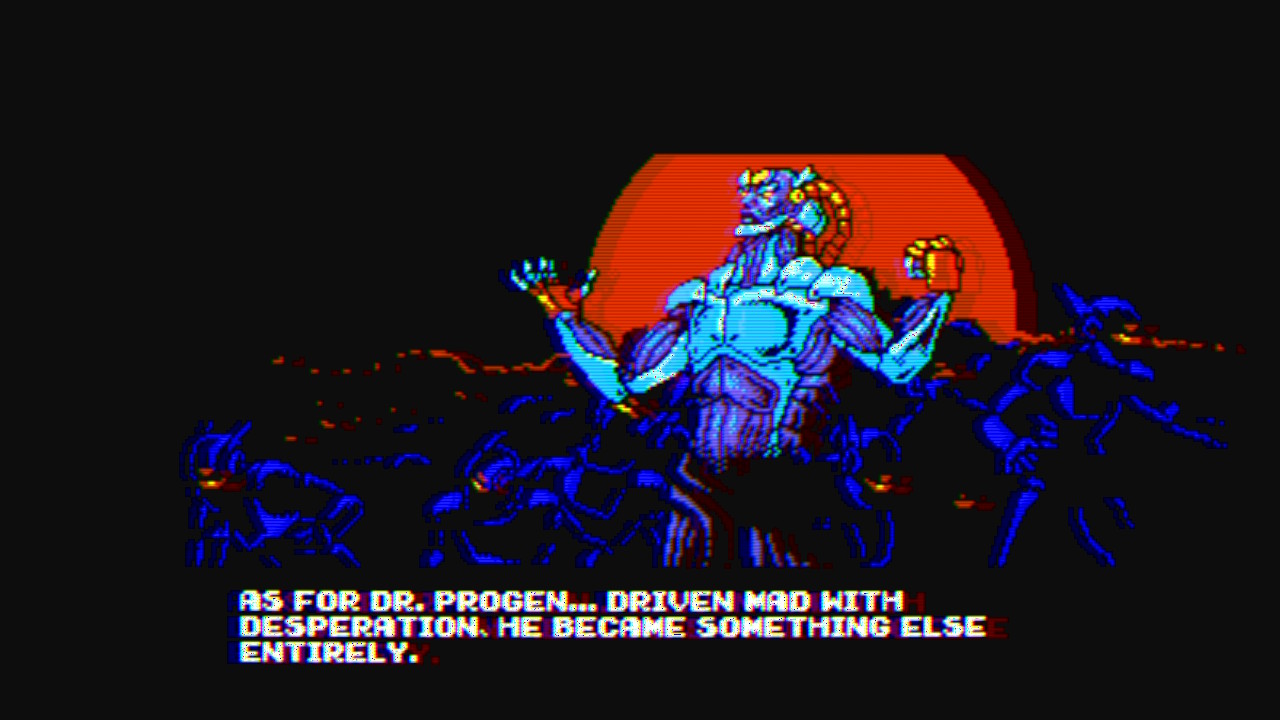
There are moments when Cyber Shadow can be really aggressively sneaky with the obstacles it presents; where it borders on trial and error. Unlike the brutal NES games of the past, players will have infinite tries and quickly respawn at the checkpoint.
These terminals also offer some temporary upgrades that might make the next try a little bit easier. Using the currency earned from smashing robots, Cyber Shadow can restore his spirit energy for his special attacks. The shuriken or rising fireballs are very helpful attacks that consume energy, since the protagonist can’t crouch attack or cut in multiple directions.
Mastering the restriction and using it to an advantage is largely the appeal of a game like this. Succumbing to ever buying any of these handicaps almost always feels embarrassing, because a true ninja never buys his way to victory. It is always possible to win with whatever Cyber Shadow is defaulted with.

Boss battles are far beyond anything that was possible on the NES. These showdowns typically will have foes that fill the screen and beyond; frequently having more than one form. Those who don’t die a lot from the spikes or pits will undoubtedly rack up hundreds of deaths from fighting the bosses.
Every retry brings the player closer to victory because they are learning. Pattern recognition kicks in and it becomes a mystery why any of these foes were a threat in the first place. No matter how much any pattern or strategy is mastered, Cyber Shadow will always demand excellent reflexes and laser focused precision.
The shredding soundtrack certainly inspires many retries. Cyber Shadow’s compositions is highly infectious and fast paced. Once again, Sunsoft’s style is recognized and represented here with subtle cues that homage their sound.
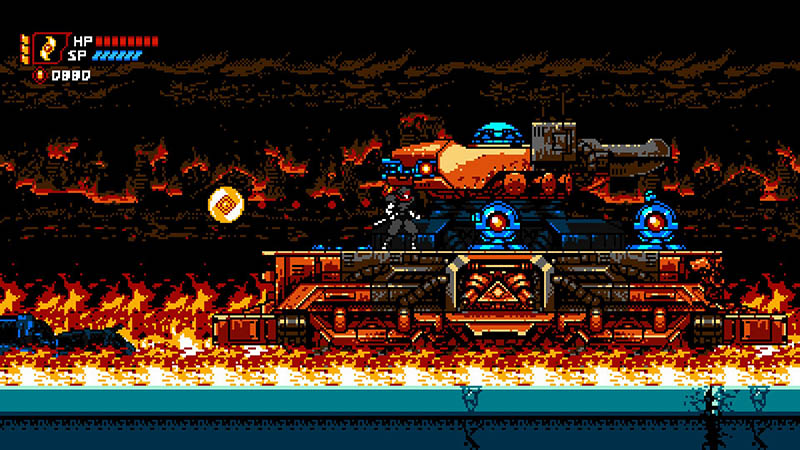
The music appropriately has Asian motifs that have that 80s ninja vibe that was very popular back in the day. There is also some pieces that sound a little bit like the criminally underrated Journey to Sillius; rousing sci-fi melodies that have a “I must never give up”, attitude.
The sound design also has the bite of the 8-bit forefathers. Clever use of static samples to create key sound effects was how retro games created that really crunchy sound and Cyber Shadow makes extensive use of this.
Since Cyber Shadow is not limited to a handful of channels, the range of sound is much more dense than anything possible on NES. There will be multiple elements at any given moment that can have their sound effects layered into a scene. This sometimes feels like some sounds are like punctuation to a particular piece of background music.

While it can feel a tad cheap at times like how most NES were; the checkpoints sometimes feel too far apart. Thankfully, collectibles are permanent and don’t need to be reacquired. Sometimes the space between checkpoints feels as long as a stage.
By far the most obnoxious design choice in Cyber Shadow is the typical “Metroidvania” elements that are taken too far. While it is understandable to create some limits on the player’s abilities early on, the hero has almost nothing at the start.
Useful abilities like the wall-slide and downward strike seem like they should have been core moves that are available at the start. These have to be earned via progression, which means having to replay the first few levels because Cyber Shadow didn’t know how to do basic ninja stuff yet.
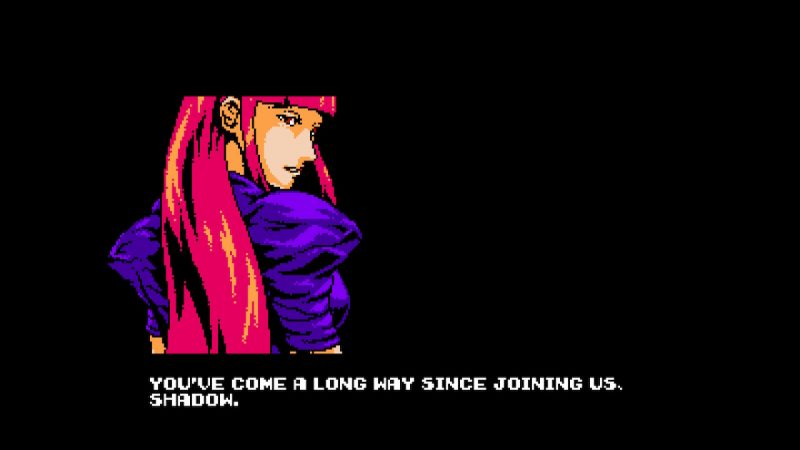
Despite this annoying, but temporary shortcoming, Cyber Shadow is an excellent game that is highly replayable. Fans of Shovel Knight and classic NES action platformers will adore this for its authenticity.
Cyber Shadow is the complete package. It makes sense that Yacht Club Games published this, as it is completely consistent with their style and approach when they made Shovel Knight.
Disregarding the retro appeal of the stylish aesthetics; Cyber Shadow is focused and carefully designed action that transcends the fact that it is a throw-back. A lot of flashy pixel art driven indie games rely on their style to carry their lack of substance. Cyber Shadow is an example of an excellent balance of everything.
Cyber Shadow was reviewed on Nintendo Switch using a review code provided by Yacht Club Games. You can find additional information about Niche Gamer’s review/ethics policy here.